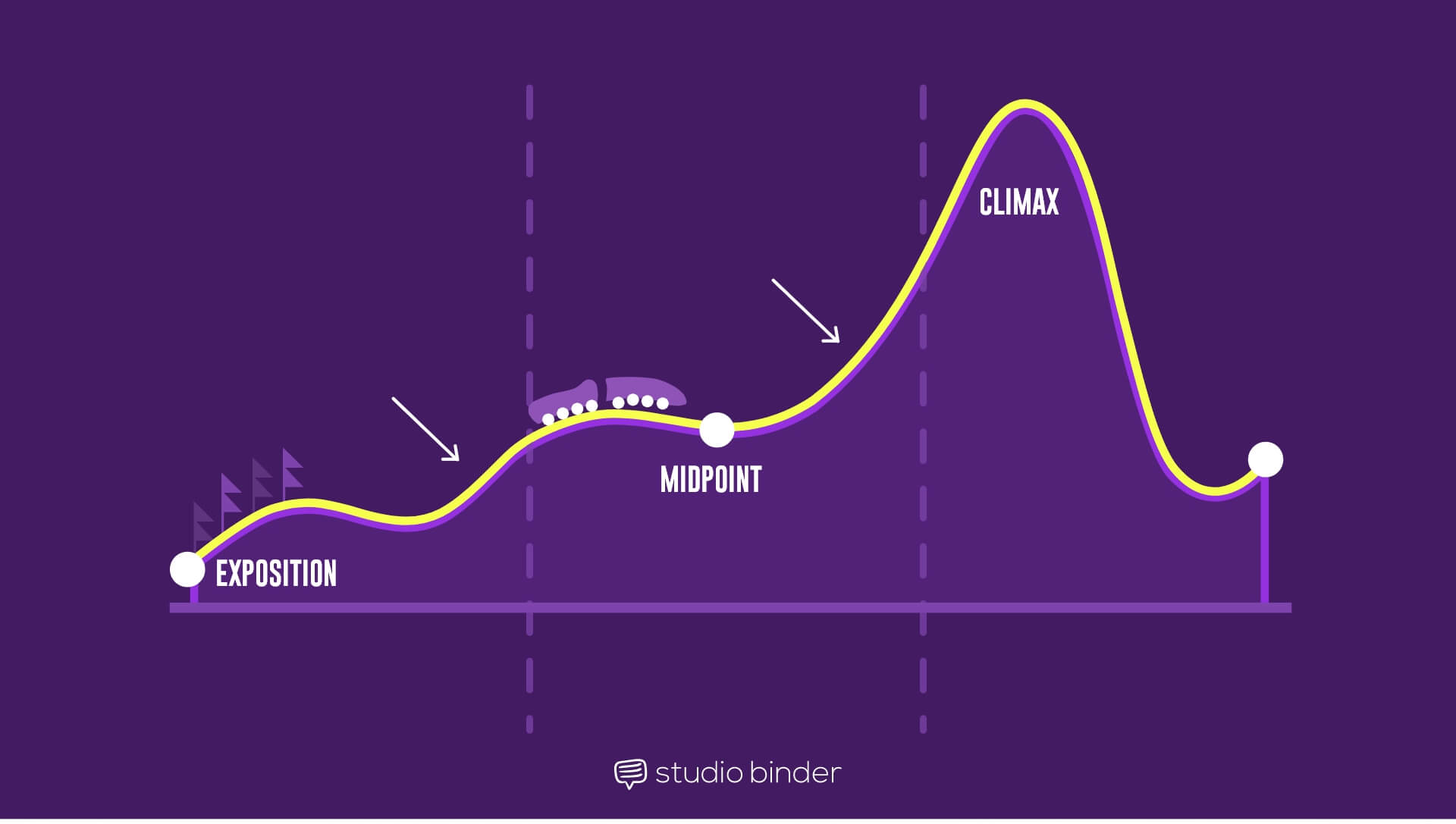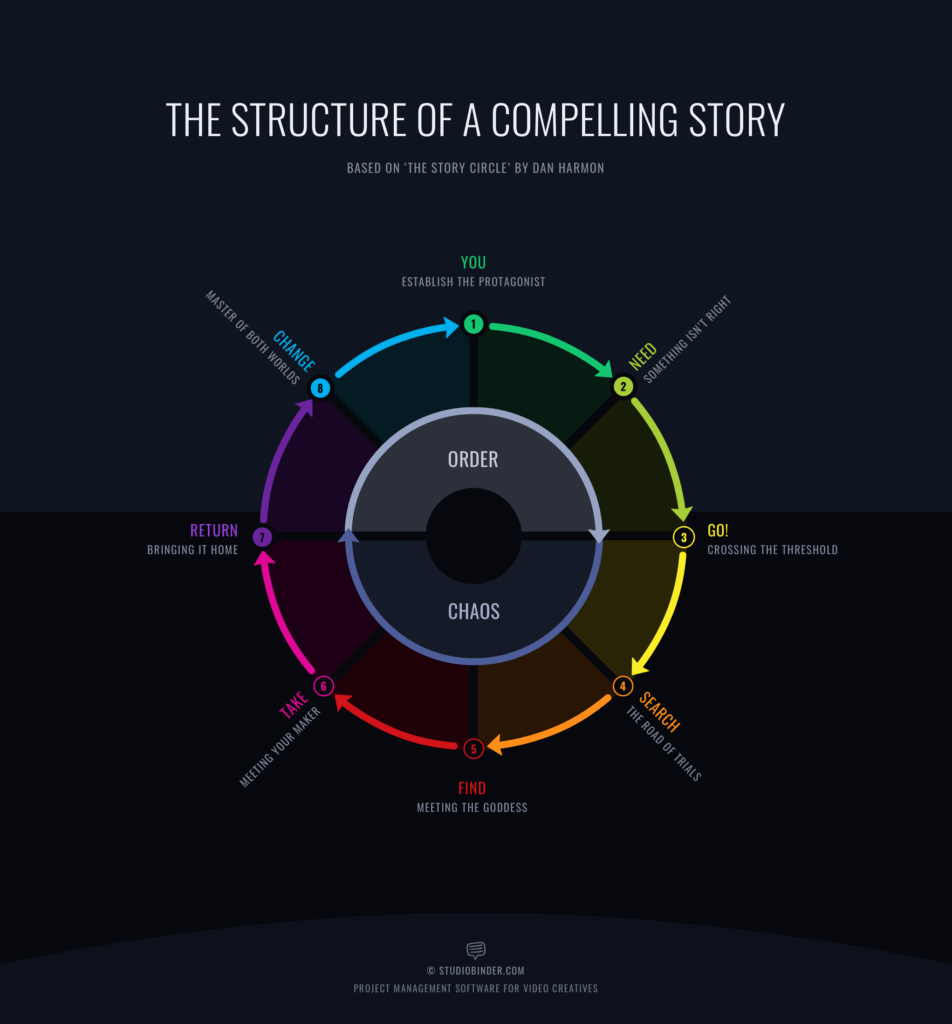Whether you searched them out yourself, or whether someone recommended you “work on structure,” all writers have come across a screenplay structure in their day. Some swear by it, others liken it to creative cancer. The truth is, whether you like them or not, there is value in understanding what the formulas are and how they are used. Today, we’ll learn the screenplay structures you need to know, how they work, and run a few scripts through them.
Basic screenplay structure
First, let’s define screenplay structure
It’s not like there’s a magical equation that can conjure up the perfect screenplay. If there was, we wouldn’t have so many duds at the box office.
Still, with millions (sometimes hundreds of millions) invested in what we see on the big screen, studios want as close to a sure thing as possible. It’s from this reality that the concept of a screenplay story structure is born.
Basic screenplay structure DEFINITION
What is a screenplay structure?
A screenplay structure is a guideline of how to write a story. They advise writers on when certain actions/beats should happen, how drama should be built, how to hold audience attention, and more.
Generally, basic screenplay structure is taught as a rough guideline to help the structure and pace of a script.
Screenplay Structure Characteristics
- Most commonly used in feature-film writing
- Many structures have obvious similarities
- Some writers swear by a proven screenplay story structure, while others find then restrictive
The truth is, when the industry began, no one knew what a screenplay structure was. The idea has been retrofitted based on the movies we’ve seen work over the years.
In a chicken vs. the egg conversation. The screenplays came first, structures/formulas second. That alone tells you that nobody NEEDS a screenwriting structure to make a great script. What you do need is an interesting story.
More than anything, that is why these exist. They try to help you create an interesting, compelling, bumpy ride for the audience.
Let’s learn about a few of them. And remember to do some research with over 250+ scripts in StudioBinder's script library where you can read and download PDFs of your favorite screenplays.
Three act structure screenplay
Understanding the 3 Act Structure
The most well-known screenplay tool is the three act structure screenplay. Most other structures accept this tool in some shape or form. It’s much less a structure than a basic storytelling principle. Here is the general idea behind this structure, including the main story beats and average page counts.
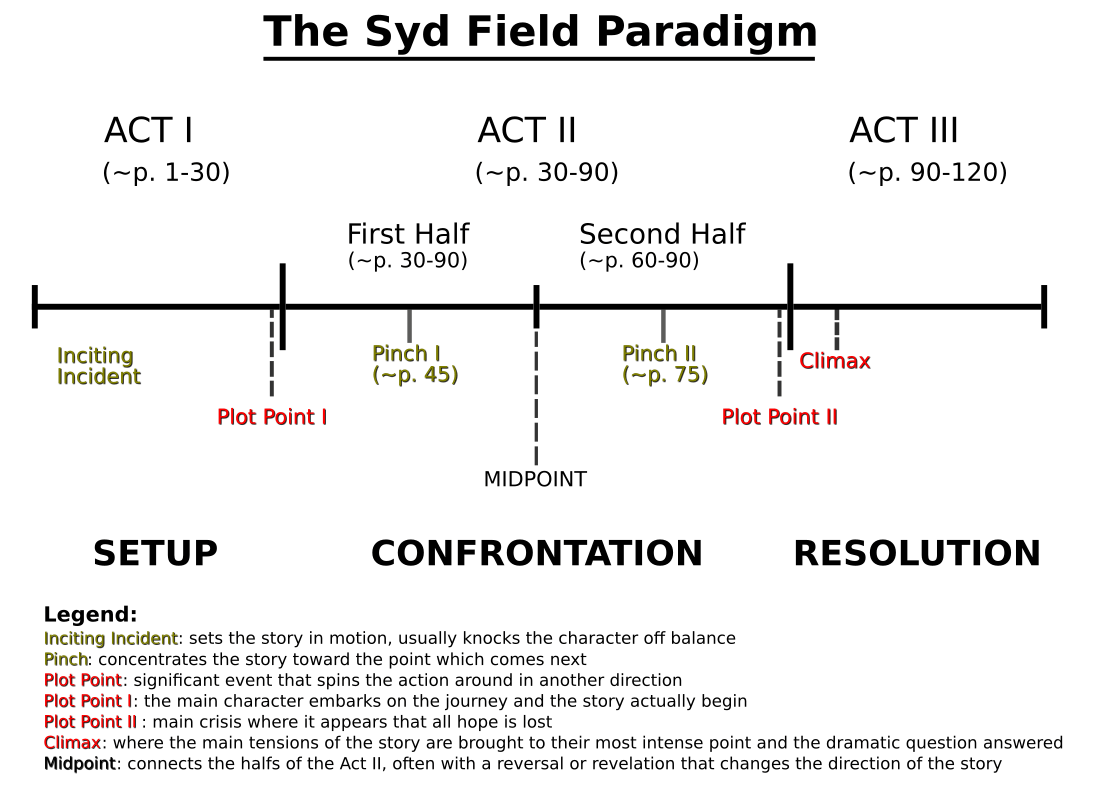
3 act structure screenplay diagram
Act One sets up the plot, establishes characters, establishes home.
Act Two we are thrust into new circumstances. Perhaps a new city, a new mission, a new love interest, etc.
Act Three is where we face the villain one last time, confess our love, go all or nothing, and either fail or succeed.
Three act structure screenplay explained
Syd Field popularized the concept with his book Screenplay (1978), Robert McKee hammered it home with his book Story (1997) and nearly all other screenwriting formulas accept this simple concept. Original tracings of the idea can be tied back to Aristotle with his strict observation of a beginning, middle, and end.
When you break it down that simply, it’s easy to understand how nearly all scripts follow this in some way, shape, or form.
For a complete explanation and, read more about the three act structure.
film script structure for Heroes
The Hero’s Journey screenplay structure
Perhaps second in widespread acceptance is The Hero’s Journey. Popularized by Joseph Campbell in the late '80s, The Hero’s Journey still has three acts, but there’s more specificity within it.
The following image breaks down the Hero’s Journey in Star Wars, Lord of The Rings, and Harry Potter. From this infographic alone, you can see how these types of adventures stories are so well-suited for this mythic structure.
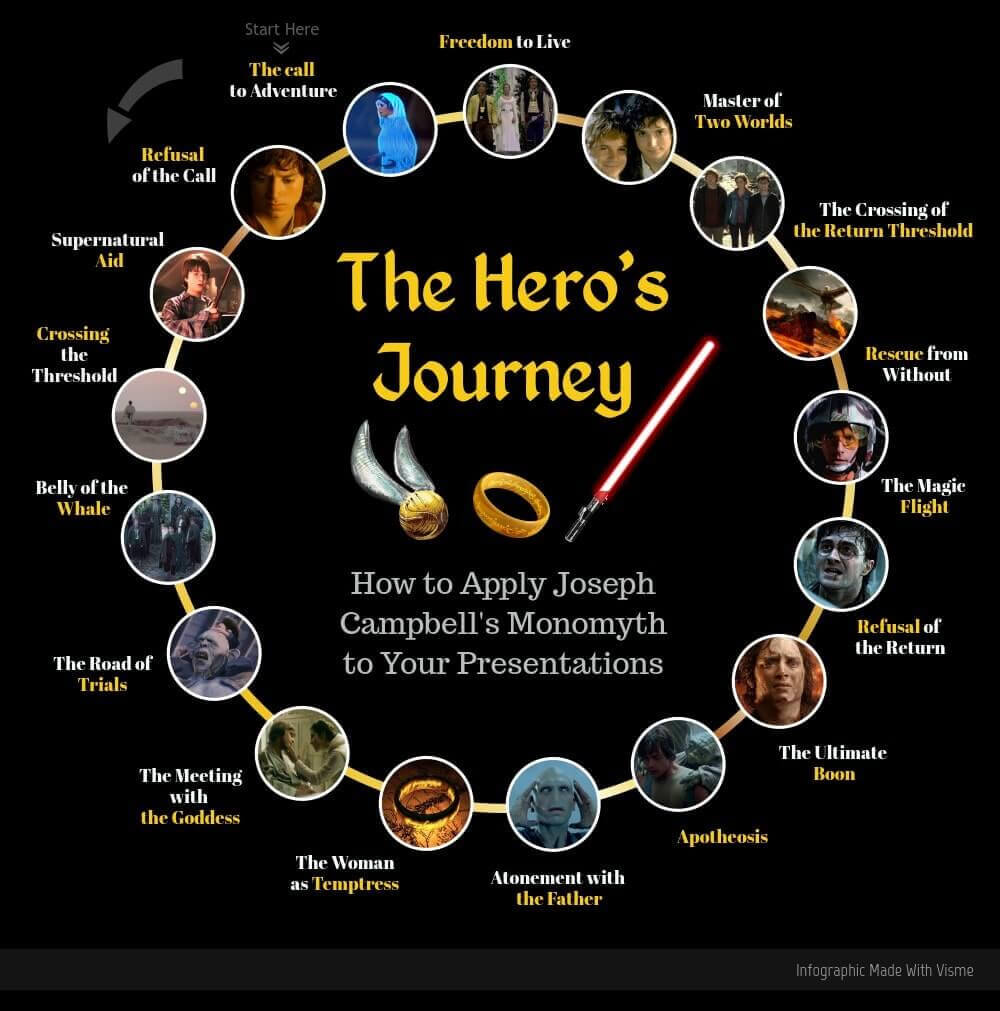
Hero’s Journey screenplay structure diagram
The call to adventure, refusing the call, until something pushes you across the threshold all occur in Act One, typically in the first 30 pages.
Once that threshold is crossed, you’re officially in Act Two.
The next few beats occur along your journey. Bumps in the road until you hit the apotheosis (in this case a huge bump) something you’ve been building up to. Maybe you lose, maybe you win… but the story isn’t over yet.
If you lose, you have to hit rock bottom, sink into despair before. If you win, it’s a tremendous height! But maybe it's a false victory and the rug is pulled out from under you, again, sending you to despair.
But you don’t stay there, something, someone, pulls you out. You confront the bad guy one last time. All for nothing. And this time, you win. You return to your original life, but things have changed, you have changed, often for the better. Here's an animated summary to put this all in context.
Hero’s Journey screenplay story structure explained
Note, it doesn’t have to be a hero in the straightforward “save the princess” sense. Your hero is simply the main character of the story.
We don’t all have a cave to enter or dragon to slay but instead a “symbolic cave” that someone is scared or hesitant to go into and find the light on the other side.
If you still have questions, read more about The Hero’s Journey with different screenplay examples.
Save the Cat screenplay structure
Save the Cat basic screenplay structure
Next up is Save The Cat.
Created by Blake Snyder (one of the few script gurus with a produced screenplay) in 2005, Save The Cat features 12 story beats.
Read on to learn more about Save the Cat and download a free beat sheet.
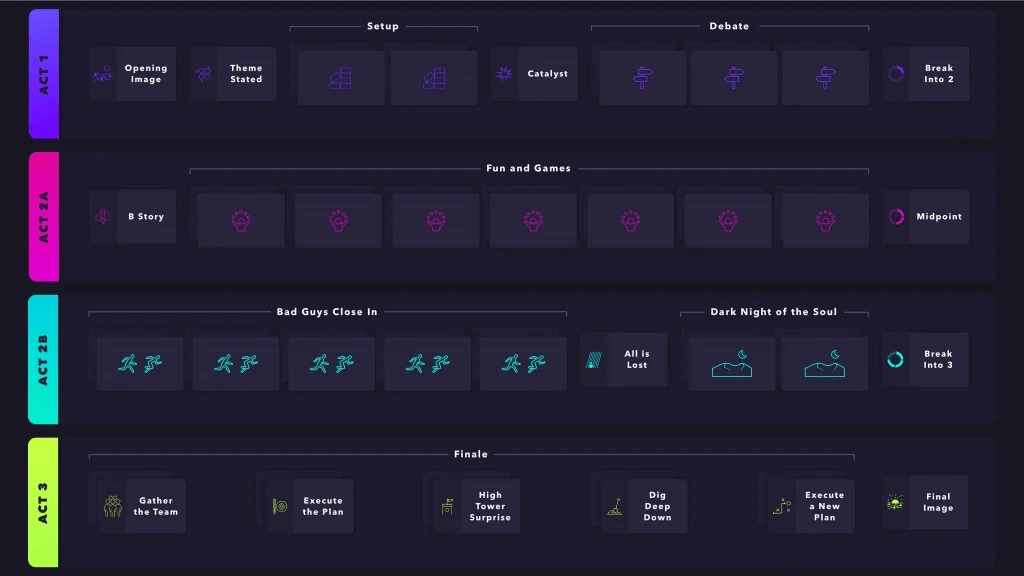
Screenplay structure diagram
Save the Cat isn’t as specific as The Hero’s Journey. Terms like “setup,” “theme,” ”debate,” and “fun and games” are intentionally made applicable to tons of story types.
Nonetheless, Save the Cat and The Hero’s Journey have incredible similarities.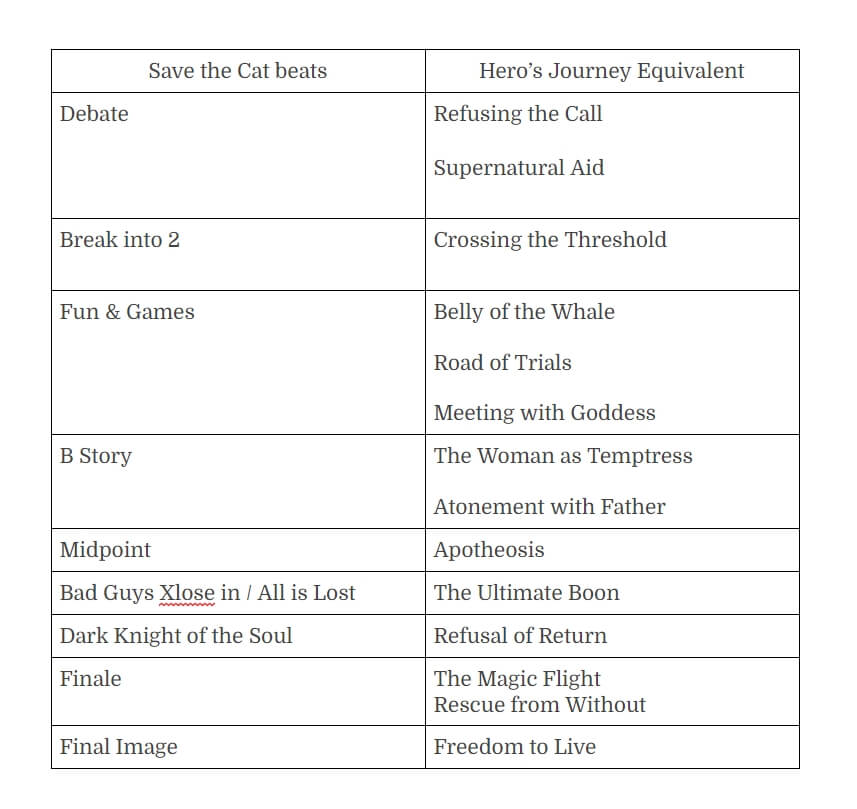
Screenplay structures compared
I left out a few Save the Cat beats like “Opening Image,” “Theme Stated,” and “Break into 3” but those beats are given in most stories.
Still, just so I don’t leave you shorthanded, we imported Interstellar (2014) into StudioBinder's screenwriting software and put it through the Save the Cat structure. Check out the results.
Interstellar Save the Cat screenplay structure • Subscribe on YouTube
Interstellar follows Save the Cat extremely well, but it by no means defines the script. For context, The Interstellar script is over 155 pages, Save the Cat offers 12 story suggestions. That’s 13 pages per suggestion!
Story Circle feature film script structure
Story Circle screenplay formula
Another more recently adopted concept is Dan Harmon’s Story Circle.
Dan Harmon is the creator of TV shows Rick and Morty as well as Community, yet still, his screenplay story structure is reminiscent of the others.
Story Circle Screenplay Structure Diagram
There are 3 acts, an implied journey, something dramatic in the middle, a change at the end. You get the drill.
We break it down like this:
- You — A character is in a zone of comfort,
- Need — But they want something.
- Go — They enter an unfamiliar situation,
- Search — Adapt to it,
- Find — Get what they wanted,
- Take — Pay a heavy price for it,
- Return — Then return to their familiar situation,
- Change — Having changed.
If you want more information on this structure, we’ve got a whole article breaking down all 8 beats of Dan Harmon’s Story circle.
And just for good measure, we imported The Dark Knight into StudioBinder and ran it through the circle. Check out the following video:
Dark Knight screenplay story structure • Subscribe on YouTube
What better movie to apply an order and chaos screenwriting structure to than The Dark Knight!
How to structure a screenplay
Experimental film script structure
Yet, as we continue making more and more movies, it’s the screenwriter’s job to look for creative, engaging ways to tell stories.
So far we’ve talked about the 90 page screenplay structure but there is also structure in the sense of storytelling techniques.
For example, there’s the good old-fashioned linear story, non-linear storyline, multiple timeline story, repeated action story, The Rashomon Effect, heck, there’s even a Pixar Formula.
Let’s talk about a few of them and see how they fit into these bigger screenplay structure examples mentioned above.
Basic screenplay structure / storytelling techniques
Linear vs non-linear
Your typical screenplay structure chart is linear. Most films follow a relatively linear path. Most, but definitely not all.
Any type of flashback or flash-forward is non-linear. Dreams sequences tend to be non-linear. Time travel is about as non-linear as it gets.
The first non-linear films that pop into my head are Pulp Fiction, Reservoir Dogs, every Chris Nolan movie, and Eternal Sunshine of the Spotless Mind.
To help visualize:

Non-linear screenplay story structure
An extreme example of this is the reverse chronological story structure, where the story is told backward. Think Cristopher Nolan’s Memento. Its wildly complex structure is explained in the video below.
Memento • Screenplay Story Structure
Yet still, even cross-cutting between flashback, black-and-white, with the story moving forwards and backward… Memento is about a man on a mission, facing foes, meeting a temptress, and following many of the “traditional” story beats we’ve learned so much about.
How to structure a screenplay… like a circle?
Circular screenplay structure
This one is basically how it sounds. A movie that acts as a circle.
However, the audience often won’t know the film is a circle until the circle is completed at the end.
A circle can imply inevitability, trapping, a cyclical nature, but it can also just be a cool way to look at a story. An ah-ha moment.
Circling back (wink wink) to Memento. It ends, timeline-wise, right after it begins. This makes sense as our protagonist can’t remember anything and therefore keeps “circling” on similar journeys.
12 Monkeys is a sci-fi film that uses time travel to make the beginning and end of the film intersect at the very same moment. A crucial moment where a decision must be made. Time travel films love to play around with circular structure, fate, and what-ifs.
It’s a much different concept than Dan Harmon’s “story circle” depicted earlier, but the character’s journey often follows a similar path.
Feature film script structure
Single vs multiple protagonists
The majority of movies focus on a single protagonist. One hero, one clear villain. James Bond, the best superhero movies, the cop vs killer story.
However, with multiple protagonists, we get more than one hero. The Departed, The Prestige, 21 Jump Street, Brokeback Mountain all have 2 leads. Read more on how to write a script with dual protagonists.
With 2 leads, sometimes both get character arcs on the same journey. And if not, the character unwilling to change will likely be the one who ends your film in despair.
But don’t feel limited to two characters! Pulp Fiction, Magnolia, Crash, The Avengers use numerous characters/timelines all sharing relatively equal weight and attention.
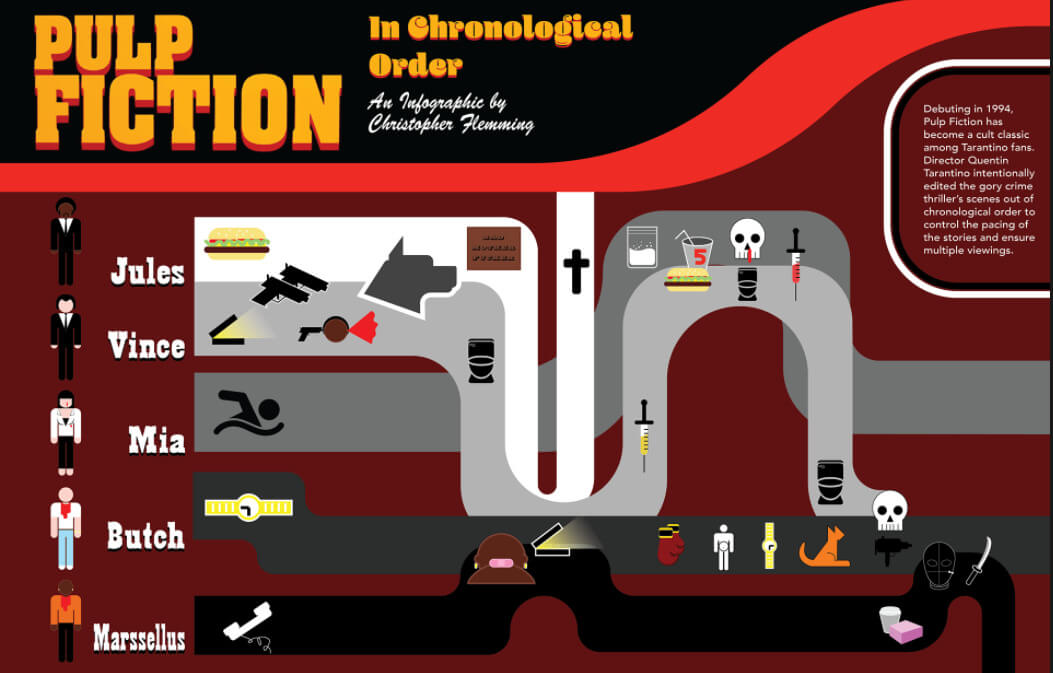
Pulp Fiction feature film script structure
These storylines can converge on one climactic event, but sometimes they won't. Perhaps their meaning is more symbolic…(e.g., Cloud Atlas, Magnolia, Babel).
Or maybe it's just a collection of stories, a film that hops from one person to the next. This is called The Daisy Chain Plot. (e.g., Slacker, Night on Earth, The Ballad of Buster Scruggs).
The Daisy Chain Plot is the least likely to follow classic screenwriting story structure and character arcs.
Screenplay structure examples… time-loop
Repeated action plot
I call this one the “Groundhog Day story” but it’s perhaps most known as a time-loop movie. You know where the same character is stuck in a reality that repeats day after day after day.
This has become increasingly popular in recent years and is extremely useful for character development. By creating a loop, you force the character to look inwards to see how they have been interacting with the world and find the secret to escaping the time loop.
Act 1 — Regular life. Then… discover the loop.
Act 2 — Explore the loop and ways to escape.
Act 3 — One final attempt to get out.
Groundhog Day dying montage
Palm Springs, Edge of Tomorrow, Source Code, Happy Death Day, Russian Doll all employ this method.
However, the structure's downfall might be the very thing that makes it great. Repetition. The idea was great the first time I saw it. Great the second time too but I can’t help feel fatigued from this structure as more and more time-loop films are made.
Different screenplay structures
The Rashomon structure
The Rashomon Effect involves detailing the same event from multiple viewpoints. It is named after the 1950 film Rashomon directed by Akira Kurosawa. In the film, a crime is recalled from the perspectives of a bandit, the bride, the samurai's ghost, and a woodcutter.
Generally, we have a mystery, and new contradictory information comes to light with each additional version of the story. This can be seen in more recent films like Gone Girl, Reservoir Dogs, and The Usual Suspects.
The Rashomon method builds mystery, mistrust, and is a very compelling way to format a screenplay.
Summarizing the 90 page screenplay structure
Wrapping it up
Are there more structures out there? Most definitely. Is any one much different for better than another? Not really.
Don’t worry too much about the structure. Worry about writing an entertaining and unique script. You can use all these structures and still write a very bad screenplay. You can use no structures and write an amazing screenplay.
Most Hollywood writers aren’t sitting next to a copy of Save The Cat as they write, but they do understand that a compelling script follows a trajectory, with highs, lows, complications, and a beginning, middle, and end.
Related Posts
UP NEXT
Writing better dialogue
You have the structures down, you know the general outline of your story, now it’s time to start writing. It’s no secret that dialogue can make or break a film, luckily for you, we’ve got a whole article on how to write compelling dialogue from start to finish.
